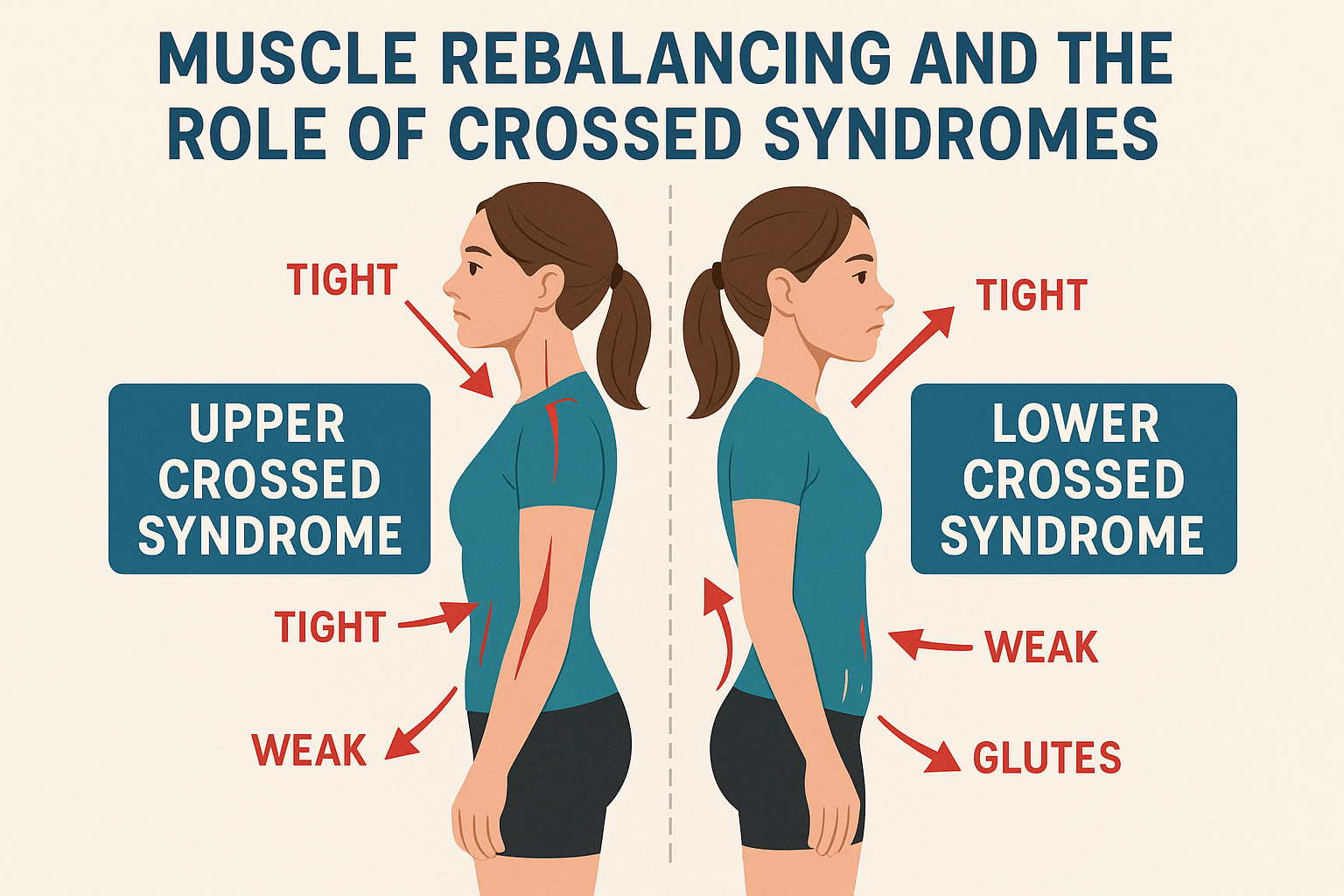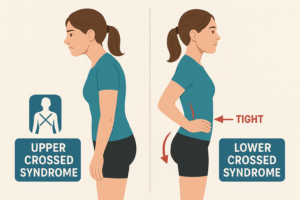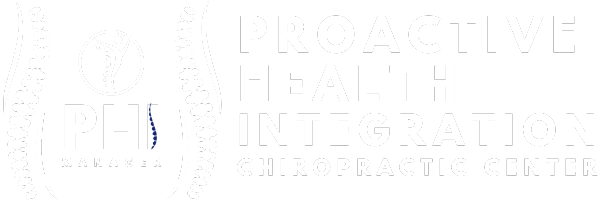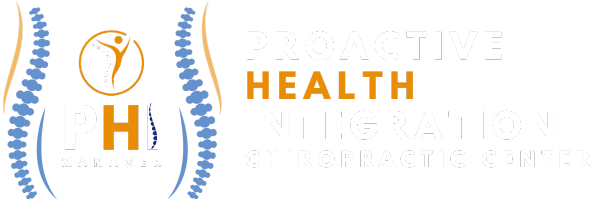
Muscle Rebalancing and the Role of Crossed Syndromes
Your Body Is an Amazing Machine
Your body is truly incredible. It’s made of muscles, bones, nerves, and joints that all work together like a well-oiled machine. Just like a car needs regular tune-ups and oil changes, your body needs care and balance to stay strong and healthy. When one part of your body gets out of balance, it affects everything else—kind of like when a tire is out of alignment and the whole car shakes.
At Proactive Health Manager, we believe that the best way to enjoy life is to take good care of your body before major problems show up. That’s why we talk a lot about something called muscle rebalancing. It means helping your muscles work together the right way—so you can move better, feel better, and stay active for years to come. When muscles become too tight or too weak, your body starts to pull itself out of shape. That’s where crossed syndromes come in, and we’re here to explain them.

What Is a Crossed Syndrome?
A crossed syndrome happens when some muscles get too tight and others become too weak. This causes your posture to change, which can lead to pain, stiffness, and even injury over time. The word “crossed” comes from the way these patterns show up in the body. For example:
- Upper Crossed Syndrome affects the neck, shoulders, and upper back. You might notice your head sticking forward, rounded shoulders, or neck pain.
- Lower Crossed Syndrome affects your hips and lower back. It often causes tight hip flexors and lower back muscles, while the core and glutes get weak.
These postural patterns are well-recognized in chiropractic and physical therapy settings. You can learn more about how poor posture affects health here.
Crossed syndromes usually develop slowly, often because of things like sitting too much, poor posture, or not getting regular movement. Many people don’t realize it’s happening until they feel stiff, sore, or tired all the time. The good news? Crossed syndromes can be corrected with care, awareness, and the right exercises.
How Muscle Imbalances Affect Daily Life
When your muscles are out of balance, your body starts working harder than it needs to. Simple movements like standing, walking, or even breathing can become uncomfortable. Over time, this can affect your energy, your mood, and your ability to enjoy the things you love—like playing with your kids, exercising, or getting a good night’s sleep.
Many people who come to see me say things like, “I thought I was just getting older,” or “I didn’t know I had bad posture.” But when we take a closer look, we often find that crossed syndromes have been building up for months or even years. Once we find the imbalance, we can start rebalancing the muscles and bringing the body back into harmony. In fact, research shows that early intervention can reduce long-term disability.

Muscle Rebalancing: The Key to Feeling Better
Muscle rebalancing means identifying which muscles are too tight and which ones are too weak—and then working to fix that. In our office, we use a combination of chiropractic care, gentle stretches, strengthening exercises, and postural training to help your body find its natural balance again.
For example, if you have Upper Crossed Syndrome, we might work on loosening tight chest muscles and strengthening your upper back. If you have Lower Crossed Syndrome, we might focus on stretching the hip flexors and building up your glutes and core.
The goal is not just to treat pain, but to restore how your body is supposed to work. Once your muscles are balanced, your posture improves, your movements become easier, and your discomfort starts to go away. Most importantly, your body becomes more resistant to future injuries.
When to Take Action—and Why It Matters
If you haven’t visited a chiropractor or done any body maintenance in the past 6 to 12 months—or longer—now is a great time to check in. Crossed syndromes don’t fix themselves. In fact, the longer you wait, the harder it becomes to reverse the damage. But with the right plan, you can start to feel better faster than you think.
At Proactive Health Manager, I care deeply about helping each patient live their best life. I’ve seen firsthand how much better people feel when we catch these patterns early and guide the body back to balance. Whether you’re starting to notice stiffness, low energy, poor posture, or just want to stay ahead of problems, I’m here to help.
Don’t wait for things to get worse. Your body is the most amazing machine you’ll ever own. Let’s keep it tuned up and running strong—so you can keep doing what you love.
Ready to take care of your body the smart way?
Click here to schedule your appointment and let’s start your journey toward a balanced, pain-free, and active life.

